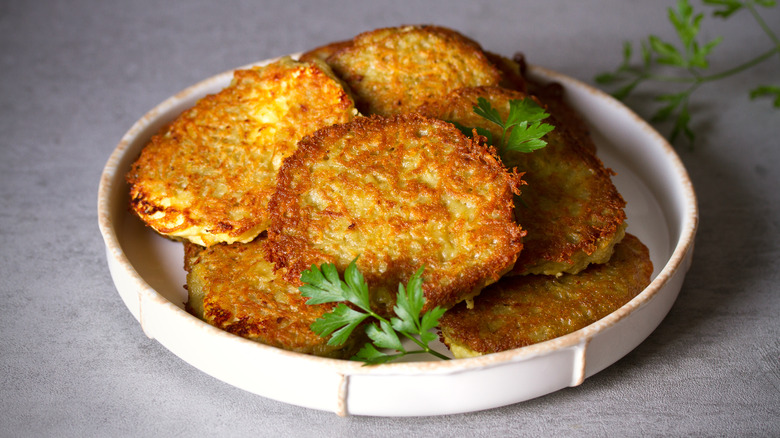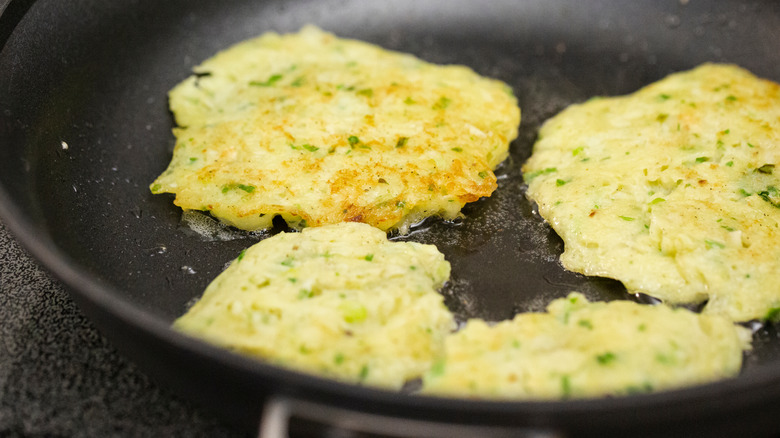Joan Nathan's Simple Trick For Perfect Potato Latkes
Most people think of latkes as a simple recipe. The potato pancakes are made with a basic combination of ingredients, including grated potatoes, onion, eggs, and flour. Given the simplicity of the recipe, you might assume that latkes are foolproof, but the truth is they're easy to mess up. As MyRecipes points out, this has a lot to do with the natural properties of potatoes. Potatoes are made up of moisture and starch, and these components can make or break your latkes. Starch helps the potato shreds stick together, so if you use a waxy variety of potatoes instead of a starchy one like the Russet, you'll end up with a latke that falls apart. No matter what type of potato you use, however, grating it will release the moisture contained within it. Too much moisture in latkes also causes them to fall apart, too.
Per Food Network, the best way to combat this issue is to use extra matzo meal to both add more starch and absorb excess water. But while this will certainly improve your latkes, according to cookbook author and New York Times writer Joan Nathan, there's actually a more effective way to go about it that doesn't require any extra ingredients or troubleshooting.
Cook your potatoes before grating them
Look up the recipe for "old fashioned" or classic latkes in any cookbook or website, and you'll notice they all call for using raw potatoes. As the Jewish cooking blog 18Doors explains, once you wash and peel the potatoes, the process entails grating them, soaking them in cold water, then draining them before combining them with onion. Joan Nathan, however, takes a different approach.
Instead of the traditional method, the New York Times writer uses a technique she learned from Nathaniel Wade, a chef at Martha's Vineyard restaurant Outermost Inn, who learned it from Winooski, Vermont restaurant Misery Loves Co. The technique involves cooking the potatoes in the oven just until the outside is fully done while the inside remains raw. The potatoes are then cooled and grated. The reason this is so effective, Nathan explains, is the par-baking process slightly dries out the potatoes, yielding the perfect balance of starch and moisture. When the grated potato is combined with the other ingredients, then fried, the resulting latkes are able to hold their shape and crisp up perfectly.

